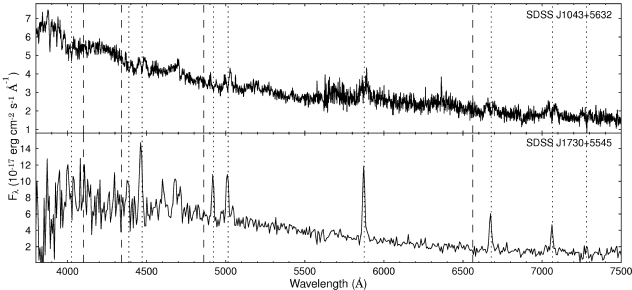Research
The AM CVn stars
Cataclysmic variable stars (CVs), consisting of a white dwarf accreting mass from a main sequence secondary, exhibit large variations in brightness due to the accretion disc that forms around the white dwarf. CVs have a period minimum observed to be at about 80 minutes (Gänsicke et al., 2009). If, however, the secondary star is (semi-) degenerate, the system can reach ultra-short periods, with mass transfer turning on at periods as short as 5 minutes - the AM CVn stars.
The AM Canum Venaticorum (AM CVn) binaries are a class of ultracompact systems that consist of a white dwarf accreting helium rich material from a (semi-) degenerate donor. They are characterised by their short binary orbital periods, which range from 5 to ~65 minutes, and an absence of hydrogen in their spectra.
In the shortest period systems (P< ~10 min) the accretion stream impacts directly onto the surface of the accretor, and no disc forms (Marsh & Steeghs, 2002). For orbital periods ~10 — ~20 minutes, the accretion disc is in a stable high state, and spectra are dominated by helium absorption from the optically thick disc (O'Donoghue et al., 1994). In the long period systems (P > ~40 min) the disc is in a stable low state, and optical spectra are dominated by helium emission lines (Warner, 1995). The intermediate period systems have unstable discs, and their appearance varies between that of the high-state and the low-state systems, analogously to the hydrogen-rich dwarf novae.
Only 35 members of the rare AM CVn class have been reported in the literature. This number has increased significantly in the past 10 years, with many systems found with the help of the Sloan Digital Sky Survey (SDSS).
Our survey
Since the AM CVn stars occupy a relatively sparsely populated region of colour space, which has a low spectroscopic completeness in the SDSS database, we have initiated a dedicated spectroscopic survey designed to uncover the 'hidden' population of AM CVns in the SDSS photometry. The colour selection leads to a sample of about 2000 candidate objects.
So far we have discovered seven new AM CVn binaries (Roelofs et al., 2009; Rau et al., 2010; Carter et al., 2012); spectra of the two newest systems are shown below.

Space density estimates
Conducting searches of the SDSS spectroscopic database, Roelofs et al. (2005) and Anderson et al. (2005, 2008) discovered six objects with the strong helium emission lines and lack of hydrogen that is characteristic of the longer period AM CVn stars.
These provided, for the first time, a relatively well defined, homogeneous sample, that was used to begin studying the population in detail. The six serendipitous SDSS AM CVns allowed estimation of the local space density based on theoretical population models. This gave a value of 1-3 x 10^-6 pc^-3, lower than expected at the time.
